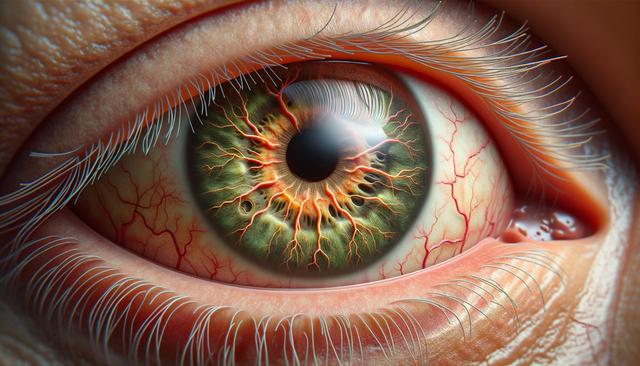Understanding Age-Related Macular Degeneration
Age-related macular degeneration (AMD) is a chronic eye condition that primarily affects individuals over the age of 50. It occurs when the macula, the central part of the retina responsible for clear vision, begins to deteriorate. This condition can make it difficult to perform tasks that require detailed vision, such as reading, driving, and recognizing faces. AMD is categorized into two types: dry AMD, which is more common, and wet AMD, which is more severe. The former is characterized by the thinning of the macula, while the latter involves fluid or blood leakage under the retina. Understanding the distinction between these types is crucial for determining the appropriate management strategies.
Lifestyle Changes to Slow AMD
Adopting healthy lifestyle habits can significantly slow the progression of AMD. Key changes include:
- Eating a balanced diet rich in leafy greens, nuts, and fish, which are high in antioxidants and omega-3 fatty acids.
- Quitting smoking, as it doubles the risk of developing AMD compared to non-smokers.
- Maintaining a healthy weight and managing underlying health conditions such as hypertension and high cholesterol.
- Protecting eyes from harmful ultraviolet light by wearing sunglasses with UV protection.
These lifestyle adjustments not only help in managing AMD but also contribute to overall health and well-being.
Medical Treatments Available
For those diagnosed with AMD, medical treatments can play a crucial role in managing the condition. While there is no definitive cure, several interventions can help slow its progression:
- Anti-VEGF injections, used primarily for wet AMD, help reduce the growth of abnormal blood vessels in the retina.
- Photodynamic therapy, which involves a light-activated drug, can help treat abnormal blood vessels without damaging surrounding tissue.
- Supplements based on the AREDS (Age-Related Eye Disease Study) formulation, including vitamins C and E, zinc, and copper, can be beneficial for those with intermediate dry AMD.
Regular consultations with an ophthalmologist are essential to monitor the condition and adjust treatments as necessary.
Preventive Measures and Eye Care
Prevention is a critical aspect of managing AMD. Regular eye examinations can help detect early signs of the disease, allowing for prompt intervention. It is recommended that individuals over the age of 50 undergo comprehensive eye exams every one to two years. During these exams, eye care professionals can identify risk factors and advise on effective preventive measures. Additionally, using an Amsler grid at home can help individuals monitor vision changes and report them to their doctor promptly.
Support and Resources for Living with AMD
Living with AMD can be challenging, but numerous resources are available to provide support. Low-vision aids such as magnifying glasses, large-print books, and electronic reading devices can enhance daily life activities. Support groups and counseling services offer emotional support and practical advice for coping with vision changes. Additionally, organizations dedicated to eye health provide valuable information and resources for those affected by AMD and their families.
Conclusion
While age-related macular degeneration poses significant challenges, understanding the condition and taking proactive steps can help manage its progression. By adopting a healthy lifestyle, exploring medical treatments, and utilizing available resources, individuals can maintain their quality of life and preserve vision for as long as possible. Regular eye care and monitoring are essential components of this journey, ensuring that those affected by AMD can continue to lead fulfilling lives.
